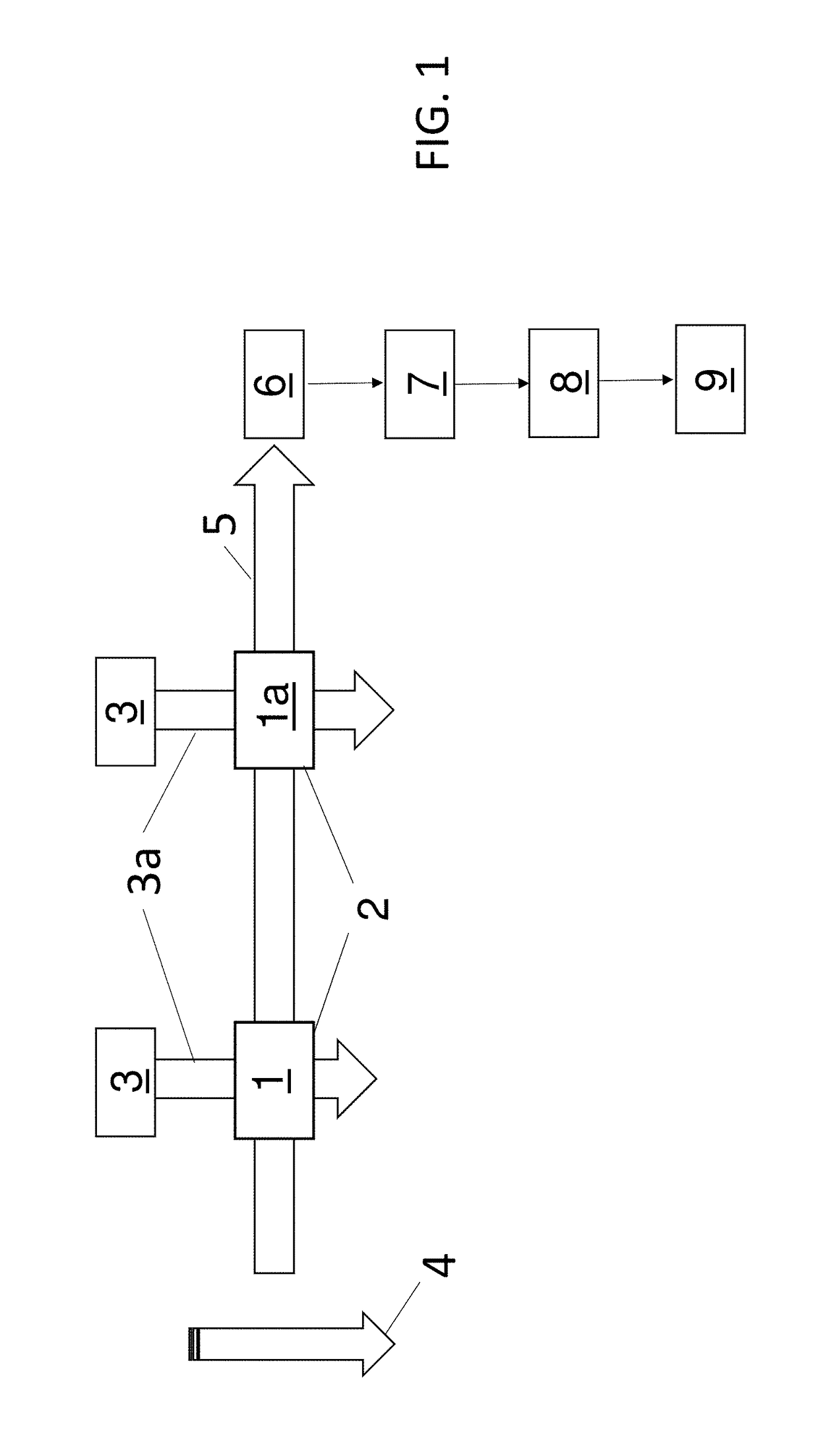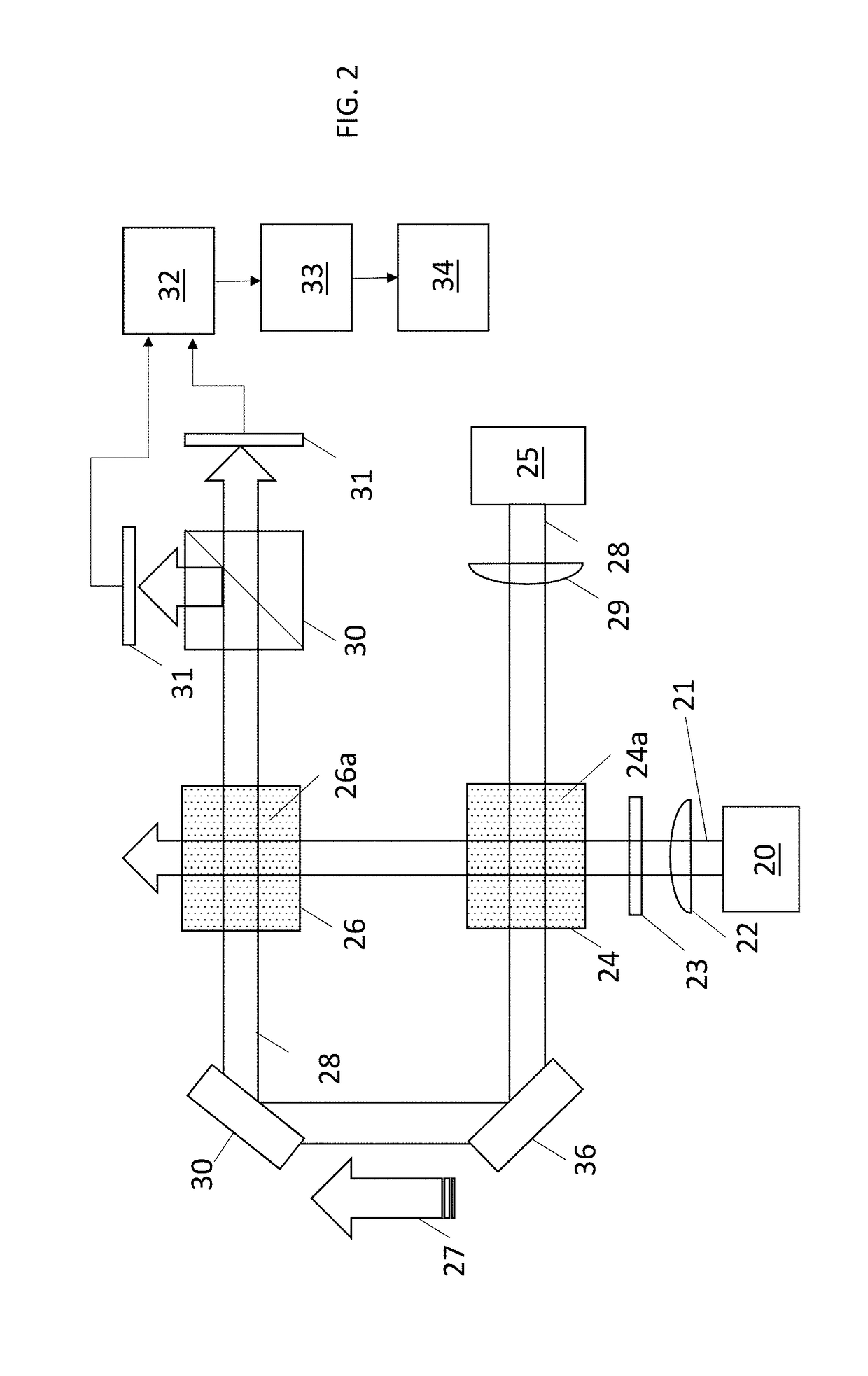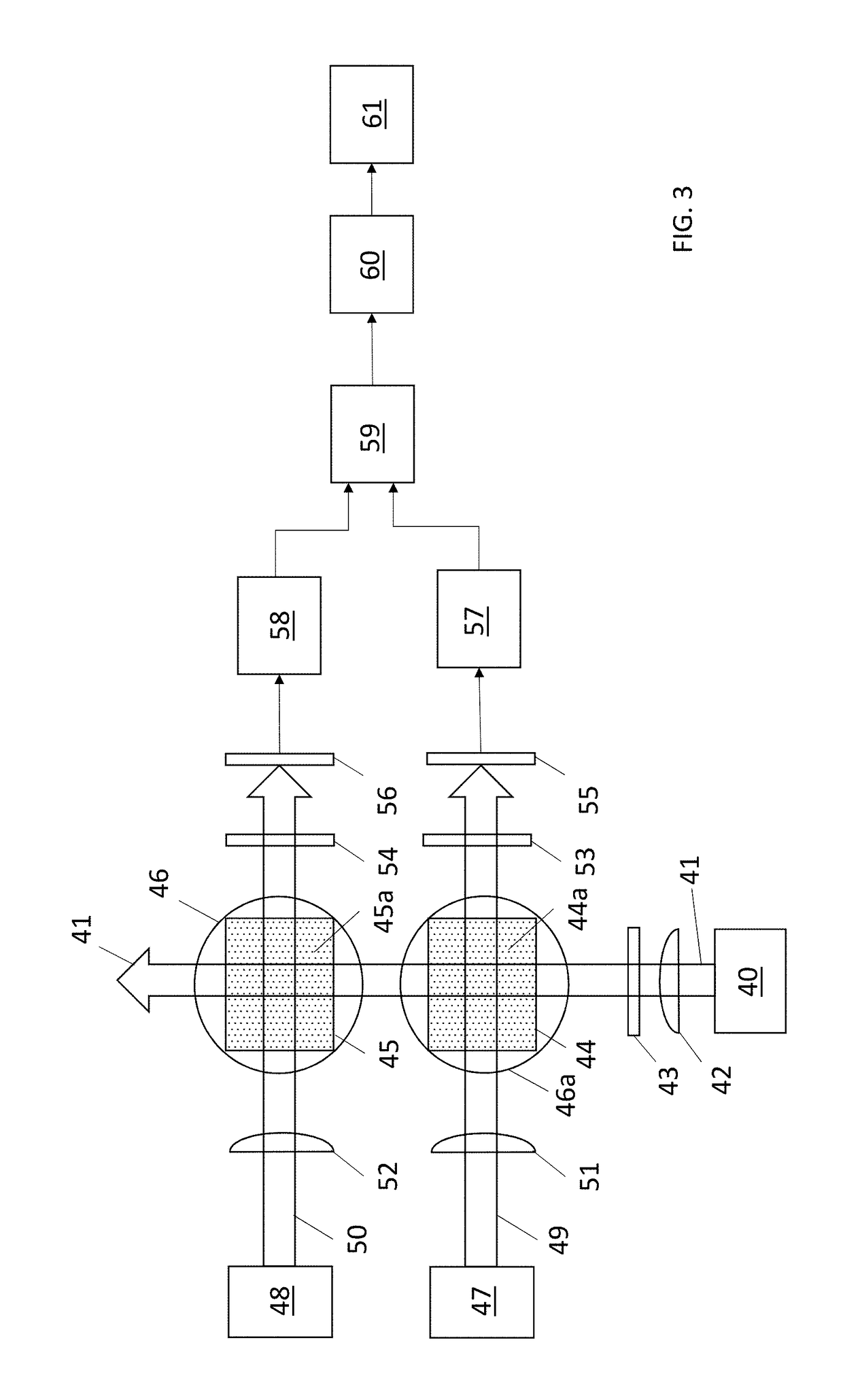Gradient Field Optically Pumped Magnetometer
a magnetometer and gradient field technology, applied in the field of magnetic gradient field sensing, can solve the problems of difficult to maintain a supply of cryogenics, complex cooling technology, bulky and expensive,
- Summary
- Abstract
- Description
- Claims
- Application Information
AI Technical Summary
Benefits of technology
Problems solved by technology
Method used
Image
Examples
example 1
[0025]As an example, a simple OPM gradiometer prototype was built as shown in FIG. 4. The gradiometer consists of two alkali vapor cells 76 and 77 separated by a distance, d, referred to as the baseline of the gradiometer. Light from a diode laser 70 at 795 nm was used to optically pump the electron spins of rubidium atoms 76a, 77a and simultaneously probe their free spin precession. The light beam 71 from the laser 70 was coupled into a polarization-maintaining optical fiber 73 with a lens 72 and delivered to the physics package 88. A physics package 88, as used herein, comprised the physical components as opposed to the electrical / electronic components of the system. In this case, the items within the physics package 88 were built and then housed in a single confined unit. The light was expanded and collimated with a lens 74 to a 2 mm diameter beam. A quarter-wave plate 75, with its optical axis aligned to 22.5° with respect to the input polarization of the light produced, ellipti...
PUM
 Login to View More
Login to View More Abstract
Description
Claims
Application Information
 Login to View More
Login to View More - R&D
- Intellectual Property
- Life Sciences
- Materials
- Tech Scout
- Unparalleled Data Quality
- Higher Quality Content
- 60% Fewer Hallucinations
Browse by: Latest US Patents, China's latest patents, Technical Efficacy Thesaurus, Application Domain, Technology Topic, Popular Technical Reports.
© 2025 PatSnap. All rights reserved.Legal|Privacy policy|Modern Slavery Act Transparency Statement|Sitemap|About US| Contact US: help@patsnap.com



